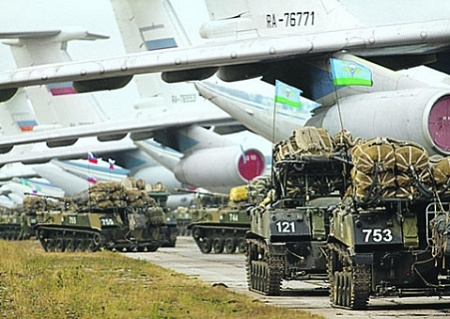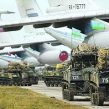
Russia’s Draft Military Doctrine: Clues, Drivers and Moscow’s Challenge to Washington
Publication: Eurasia Daily Monitor Volume: 11 Issue: 191
By:

President Vladimir’s Putin’s decision, on September 2, to order adjustments to Russia’s 2010 Military Doctrine by the end of the year raised questions concerning the timing and its underlying intention (see EDM, September 9). Recent analysis in the Russian military press and statements by the political-military leadership provide clues about what changes may occur, the drivers behind the process, and the potential challenge to Washington that the revised doctrine might represent (Nezavisimoye Voyennoye Obozreniye, October 17).
Signals as to the possibly anti-American emphasis to be enshrined in the revised doctrine stem from Foreign Minister Sergei Lavrov, who stated that Moscow faces a lengthy period of strained relations with Washington. On October 24, Putin told the Valdai Club meeting in Sochi that the United States is to blame for the crisis in Ukraine, castigated US policy since the end of the Cold War, and suggested building a new international system that could restrict actions against third party states. Tatyana Stanovaya, an analyst at the Moscow-based Center for Political Technologies, characterized Putin’s logic as: “if there are no rules for the US, there are no rules for Russia” (Slon.ru, October 24).
Although Putin’s speech contained a large measure of anti-American rhetoric, there also seemed to be a muddled offer of better times ahead in US-Russia relations. However, the theme of anti-American rhetoric reached fever pitch in an interview with the individual actually tasked with overseeing the revisions to the Russian Military Doctrine: Nikolai Patrushev, chairman of the Security Council and former director of the Federal Security Service (FSB) (Rossiyskaya Gazeta, October 15). Patrushev bordered on blaming all of Russia’s woes on United States’ foreign policy, culminating in asserting that Washington is currently pursuing a policy of containment against Russia aimed at exploiting its weak points. Yet, as the crisis in Ukraine served to highlight, the reality is that Washington has no “Russia policy,” as such, and rather reacts to Moscow’s efforts to challenge its interests. Predictably, on the subject of Ukraine, Patrushev alleged that the popular Maidan mass protests in Ukraine found inspiration and support from the US, forcing Moscow to act: “never before had such a coup impinged on Russia’s interests so directly,” he affirmed (Rossiyskaya Gazeta, October 15).
In the context of the crisis in US-Russia relations, the North Atlantic Treaty Organization (NATO) suspending its relations with Moscow due to the Russian annexation of Crimea, and measures adopted by the Alliance to strengthen security among its Eastern members, it is likely that the revised Military Doctrine will declare the US to be the main threat to the country’s security. Nonetheless, there are grounds to question how real or rhetorically rooted this might prove. A recent commentary in Nezavisimoye Voyennoye Obozreniye questioned whether the crisis in Ukraine and the Western response to Moscow’s actions are the main drivers of the revised Military Doctrine. The author argued that numerous other developments were driving this process and, more importantly, noted that the revision was long overdue. In other words, some type of doctrinal revision would have occurred without the added impetus of the Ukraine crisis; if anything, this has only served to reschedule the process (Nezavisimoye Voyennoye Obozreniye, October 17).
The 2010 Military Doctrine was ordered by President Putin five years earlier, and its lengthy drafting process appears to have made little significant progress after 2007. Thus, when the latest Military Doctrine was signed into law on February 5, 2010, by Dmitry Medvedev, it bore little resemblance to the “New Look” reforms initiated in the fall of 2008. In this sense, the fundamental driver of the revisions to the doctrine is to correct this imbalance. There are also drivers relating to Russia’s threat perception. Some of these are present in the current doctrine, such as concern over US missile defense, NATO enlargement and infrastructure appearing closer to Russia’s borders, or US Prompt Global Strike. Others are more recent, ranging from the International Security Assistance Force (ISAF) drawdown from Afghanistan to the deteriorating security situation in the Middle East, and the ongoing US-led struggle against Islamic State in Iraq and Syria. The 2010 Military Doctrine refers to familiar Russian concerns over the threat of “color revolution” and this is likely also a theme driving further revisions. The likelihood that the revised Military Doctrine will further strengthen the anti–color revolution aspects of state security is supported by the unanimity of presentations on the subject by the top brass during the Moscow Security conference in May 2014, which placed great emphasis upon “color revolution” as a potential threat to the Russian state (see EDM, June 2).
One of the authors of the 2010 Military Doctrine, former chief of the General Staff Army-General (retired) Yury Baluyevskiy, sees no need to adjust nuclear doctrine. In his view, the overall adjustment to the current doctrine should be “without hype, especially with regard to nuclear weapons.” Indeed, Baluyevskiy stresses the need for “non-nuclear deterrence,” which will involve a “silent system,” meaning a range of non-military measures aimed at strengthening the security of the Russian state (Nezavisimoye Voyennoye Obozreniye, October 17).
While the doctrinal revisions will correct the “cart before the horse” impression in the 2010 Military Doctrine, aligning the document more clearly with the reformed military structures and leaving plenty of scope for further changes, such as forming an Arctic command or strengthening the elite airborne forces, it is also intended to complement the state armaments program 2016–2025, which is in preparation. These developments seem geared toward making a bet on the successful adoption of high-technology assets into the military, despite pressures on the Russian economy and widely known problems and challenges facing the domestic defense industry (Nezavisimoye Voyennoye Obozreniye, October 17).
Consequently, it may be expected that the adjustments to the Military Doctrine will encapsulate change in Russian military and security thinking, re-equipment priorities and shifts within the strategic environment with at least a rhetorical anti-American theme. These changes are not exclusively driven by the crisis in Ukraine, nor will they provide a fully developed doctrinal basis for non-linear warfare. But taken as a whole, the revised doctrine is likely to mark a shift toward a more holistic view of Russian security that wrenches the existing structures out of their traditional approaches. In this regard, one litmus test will be how far the revision moves toward a system of non-nuclear deterrence. The apparently “rushed job” to make these revisions within three months may inhibit any radical change, resulting in a low key set of changes.




